-
Orange Tip of the Tail
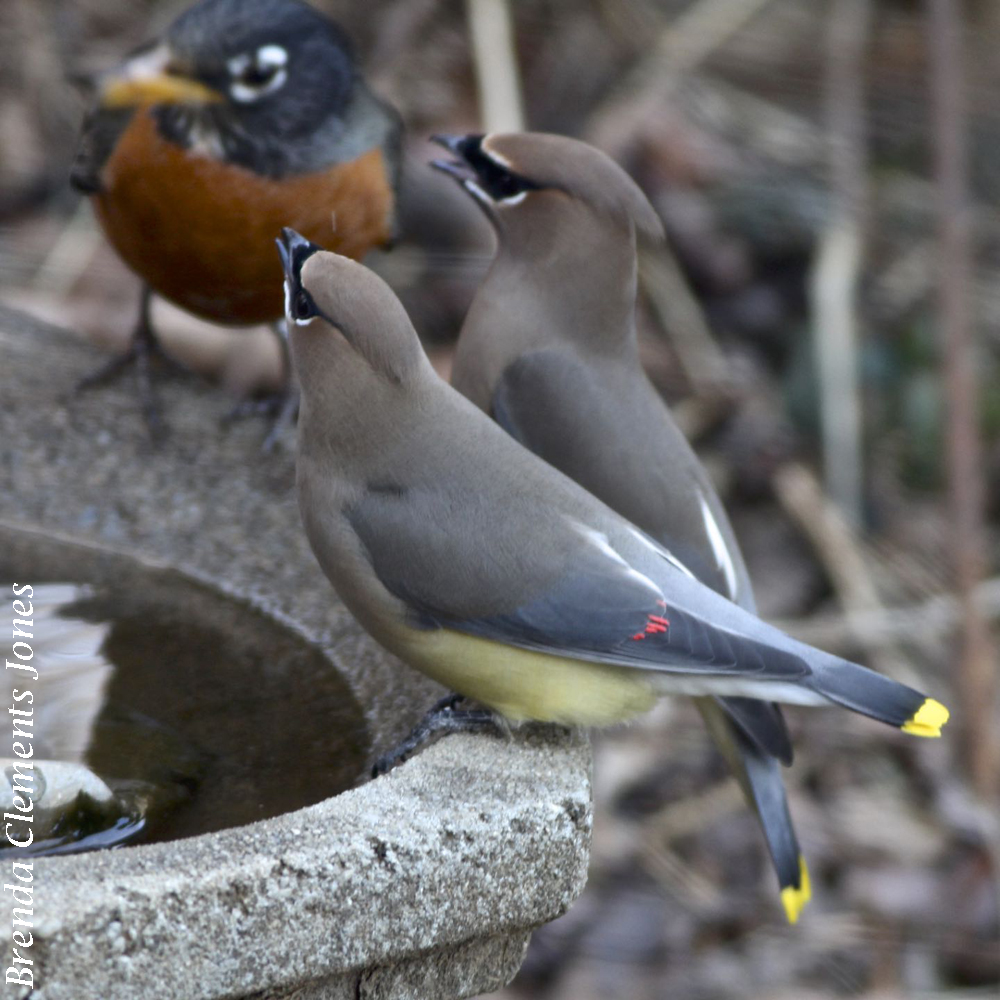
Imagine an introduced plant species changing the color of a beloved songbird native to North and Central America. This does happen. In the image above, you see two Cedar Waxwings (Bombycilla cedrorum) sharing a birdbath with a Robin. Those Cedar Waxwings are sporting bright yellow tail tips. That’s what I expect to see. But if…
-
Birdbaths in Winter
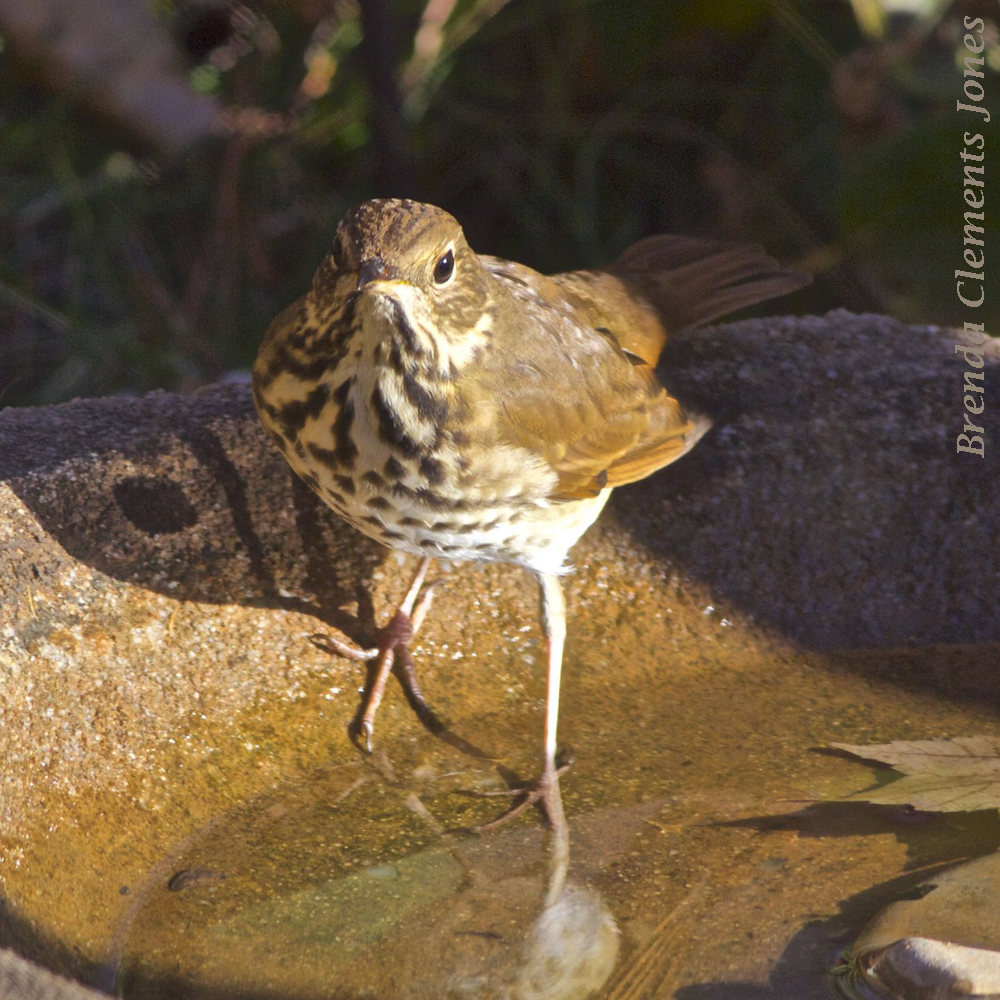
During the winter my birdbaths really draw the birds. Bring in birds that aren’t interested in the seeds and suet that I put out at the feeders. Cedar Waxwings (Bombycilla cedrorum) and Robins (Turdus migratorius) don’t eat at the feeders but they sure take pleasure in the water. Another on my list of those that…
-
Cedar Waxwings, Part 2
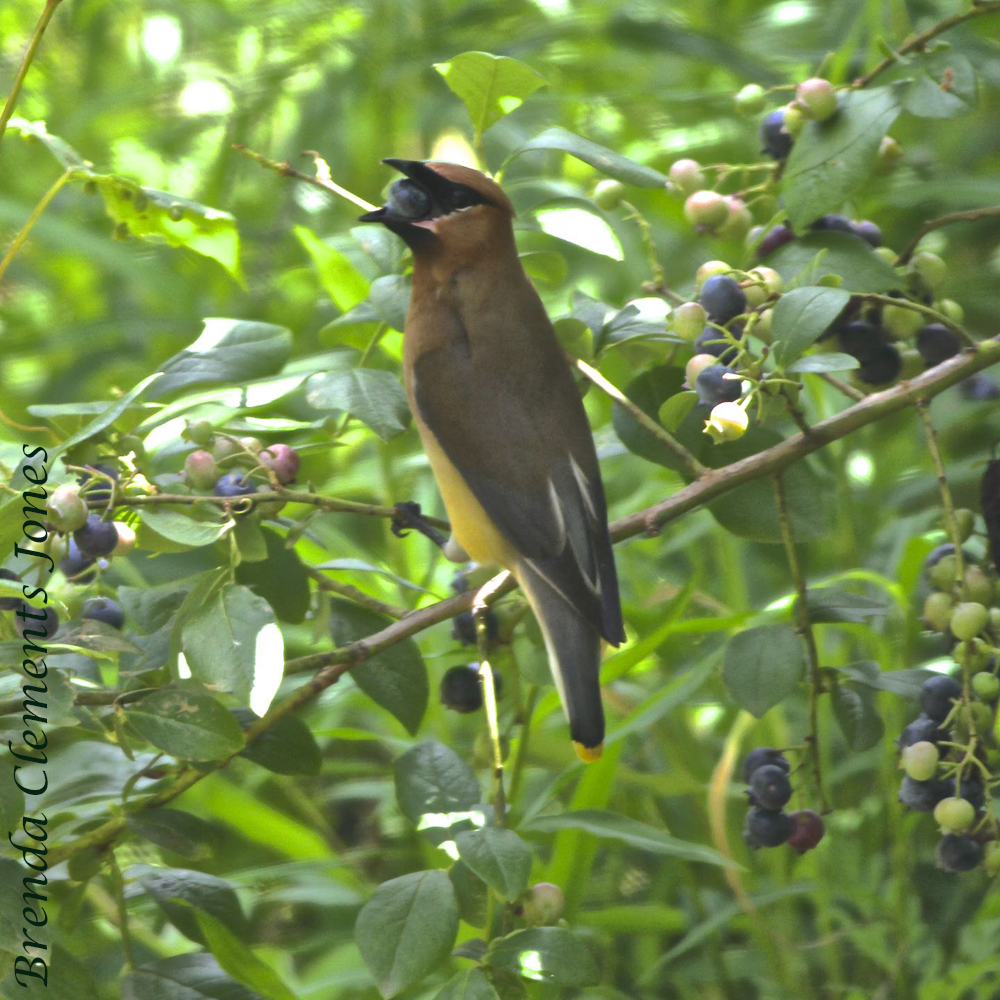
At my cabin there are so many blueberry bushes. So many, if I had to guess, that guess would be maybe twelve mature bushes. Maybe. By the Fourth of July every year my freezer is filled with quart sized bags of berries to provide muffins, pies, pancakes, toppings for ice cream, scones and more pies.…
-
Cedar Waxwings
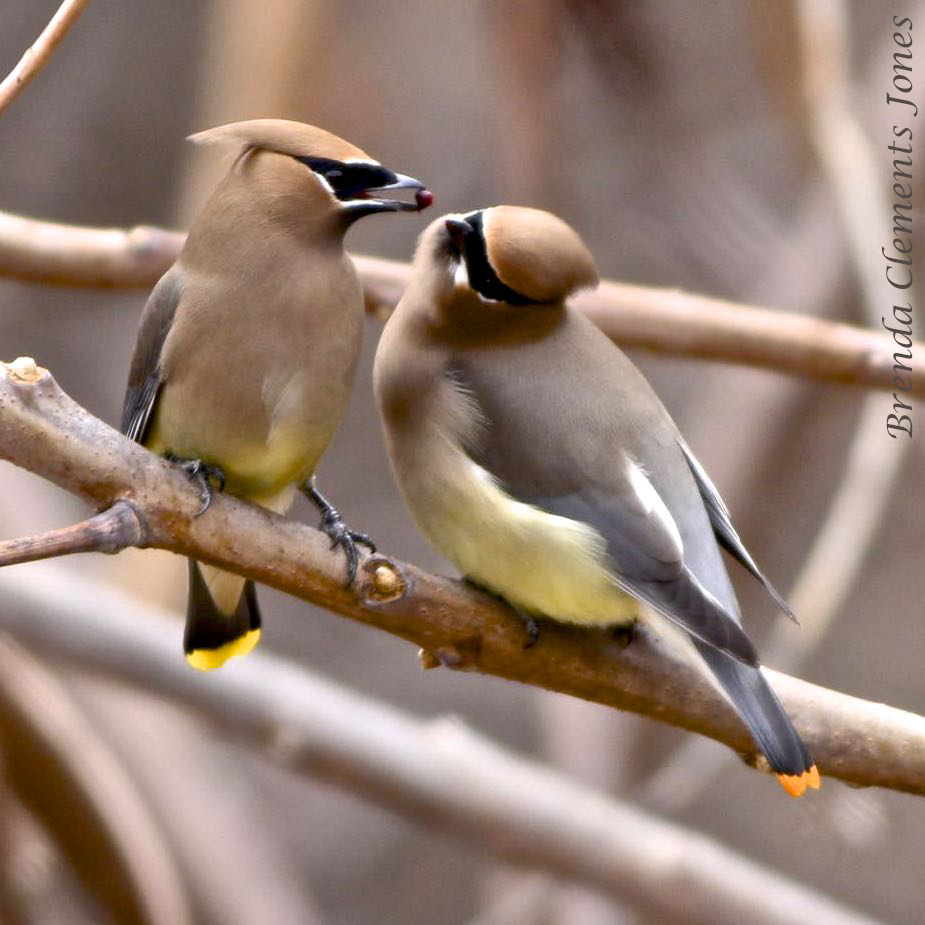
Perhaps you’ve seen this photo in the past. It’s one of my favorite images of the many many that I’ve taken. Surely I’ve used it before. These Cedar Waxwings (Bombycilla cedrorum) are performing a mating ritual in which the pair pass a treasure (in this case a sumac berry) back and forth. No telling which…
-
Robins a Sign of Spring?
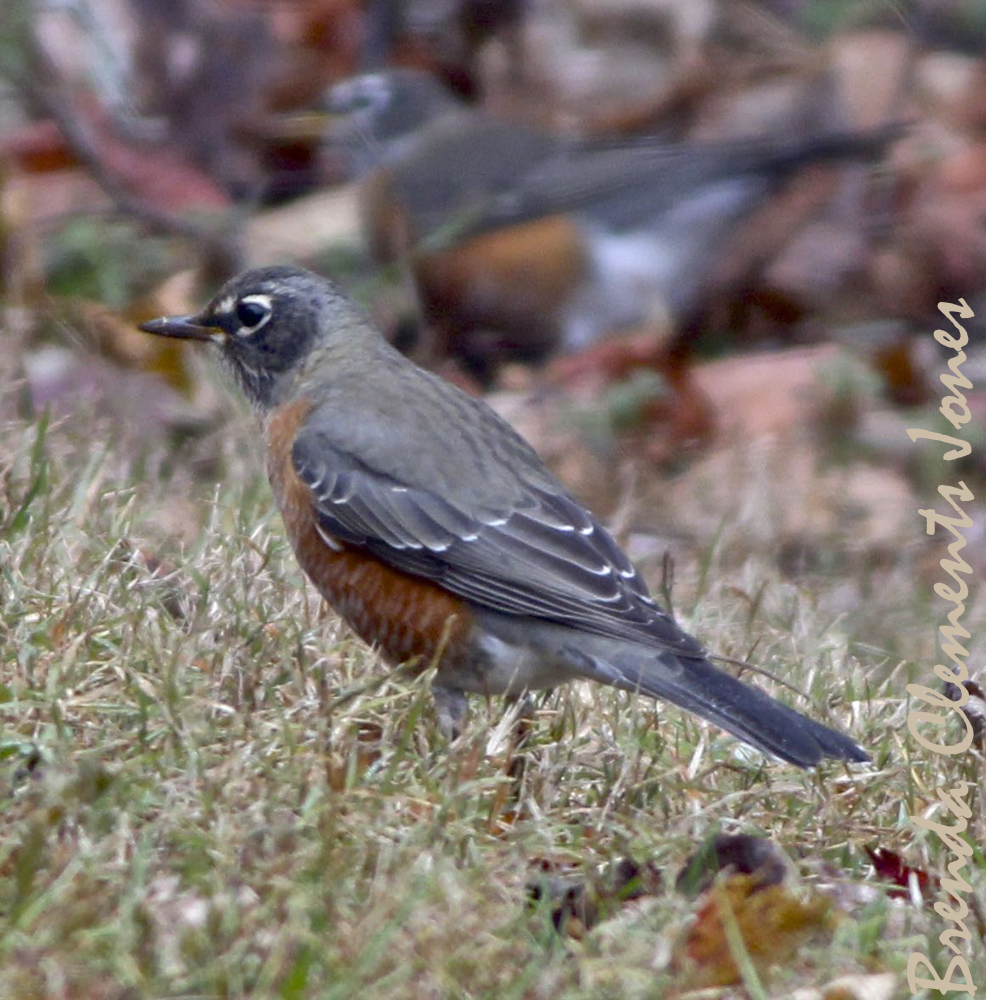
American Robins, Turdus migratorius. Some migrate. Some don’t migrate. Either way, during winter they are often seen searching for earthworms, grubs, fruits and berries. Here at my cabin it’s not unusual to see flocks of robins congregating in the frigid temperatures, eating and taking advantage of the birdbath I keep thawed with a water warmer.…